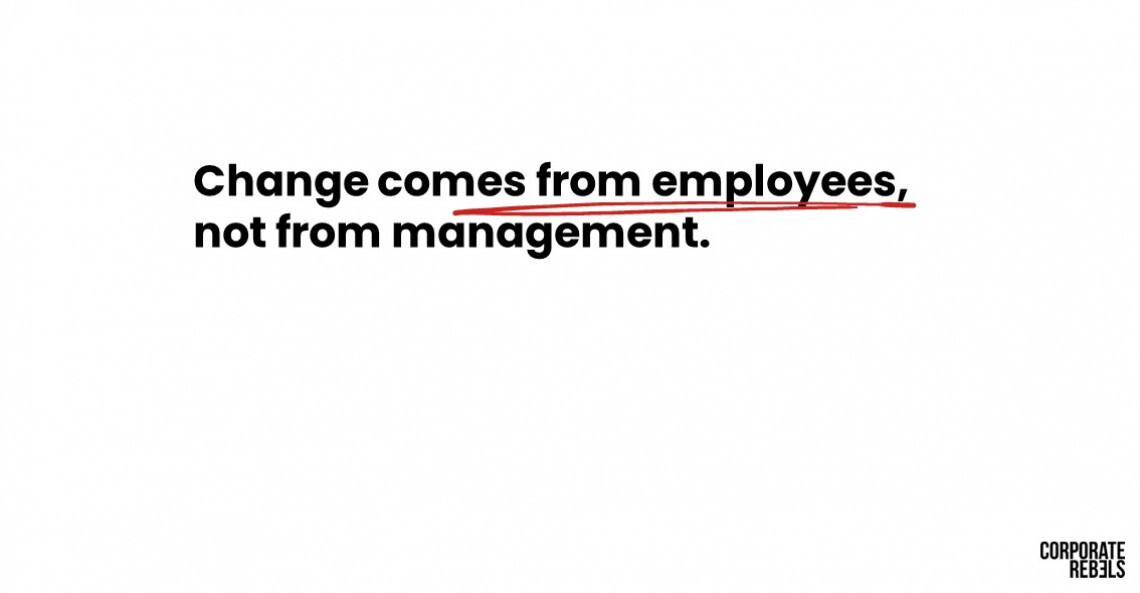Change Management As A Soft Skill

In case you didn't know, change management is an important skill in organizations. After all, change is all around us, and it's never going to stop. Here are some key steps to implement change successfully.

The world is always changing. Sometimes, the changes can be fairly huge, like when COVID-19 hit the world. Likewise, an organization is a hybrid and evolving entity: always moving, forever changing.
But how do you ensure that changes are successful—a step forward rather than backward? And what about changes that are merely for the sake of changing something? Let's try to highlight the importance of change management, and lay out some ways to implement change successfully.
Change is good... and so is change management
Many think change is hard. In fact, research shows that we assume failure is a more likely outcome than success. As a result, we wrongly treat successful outcomes as flukes and bad results as irrefutable proof that change is difficult. Have you ever noticed that?
Research highlights the importance of knowing how to plan for, coordinate, and carry out change as a valuable skill for employees, managers, and business leaders alike.
There you have it: change management should be considered a soft skill. It is the ability to combine a vision, strategy, perseverance, empathy, insight into people, cooperation, and goal-oriented work, to achieve something. It is the soft skill of correctly deploying a body of knowledge, insights, and tools to realize change.
Change comes from employees, not from management
Organizational change is usually either adaptive or transformational. It can be implemented to cut costs or to improve the company, and it can also be helpful to implement new systems or introduce a new product.
Organizational change can also be a change in the organizational structure, like a move to a flat hierarchy.
Such change within an organization is often conceived from an organizational perspective. In reality, the organization consists of individuals who ultimately work within that (changed) environment. So, this change should be seen from the individual employee perspective.
As a consequence, successful change management requires you to ensure that all people in the organization go through the transition as quickly and smoothly as possible, allowing both the people and the organization to make use of the benefits that the change is meant to bring about.
Steps to take for successful changes and change management
Changes are often considered hard and difficult to implement, but this is mostly based on false presumptions. With these steps, you can introduce change into your organization with a high chance of success.
1. Engage everyone with the change
Create urgency and make sure everyone knows what is happening and, most importantly, why it's happening. Dare to take risks and encourage employees to come up with new ideas and solutions.
By involving everyone in the steps you take, the change comes from within the organization itself. Explicitly define the change and make sure the goal is well-known by everyone in the company. This makes the transition easier, faster, and generally more successful.
Moreover, let all employees vote on whether or not they want to make the change you are proposing and co-creating. If less than 80% of the workforce votes in favor for the proposed change, do not even bother thinking about a positive end result. You need near full support for that to have a chance of happening.
2. Plan change
Like any other project, a solid plan will increase the likelihood of success for the change. This is where change management shines.
Some things to take into consideration:
- Valid reasons: Why is the change implemented? What is the reason for the company to change? A clear, valid reason for change that everyone in the organization can agree with is absolutely necessary for a successful change.
- Scope: It should be crystal clear what is within the proposed change, and what isn't. For example, on what aspects are you creating radical transparency? How are you giving employees a stake in the outcome? What will the new flat organizational structure look like? Clarity is key.
- Performance parameters: To indicate whether the change was successful, it needs to be established how this will be measured. A baseline is also important because you should be able to measure if and how the change is significantly impacting productivity, customer satisfaction, and employee satisfaction.
- Responsibility: Who will bear the responsibility and task of implementing the change? Who takes the lead and who is ultimately responsible? It helps if there is a clear group of people, like a dedicated transformation team, who go to the battlefield.
3. Implementing the changes
When the changes are clearly communicated and well-prepared, they can be implemented. Whether you do this one step at a time, re-evaluate and continue, or just jump straight in with a big splash is up to you.
Whatever you decide to do, make sure everyone knows the reason(s) for change and what is expected of them and their team to make the change a reality.
Does everyone know what will change, for them, as an individual? Are all voices heard, and all feelings, dreams, and fears sufficiently handled? In that case, the transition has a better chance to survive.
4. Make sure the change becomes the new norm
Change management is not the introduction of a novelty; it is there to create permanent changes in processes or culture. Make sure the change is embedded in the organization. This requires discipline and perseverance.
Inspiration
Do you need more inspiration on what to change, and how to change to become a more progressive workplace? Then check out our Corporate Rebels Academy.

